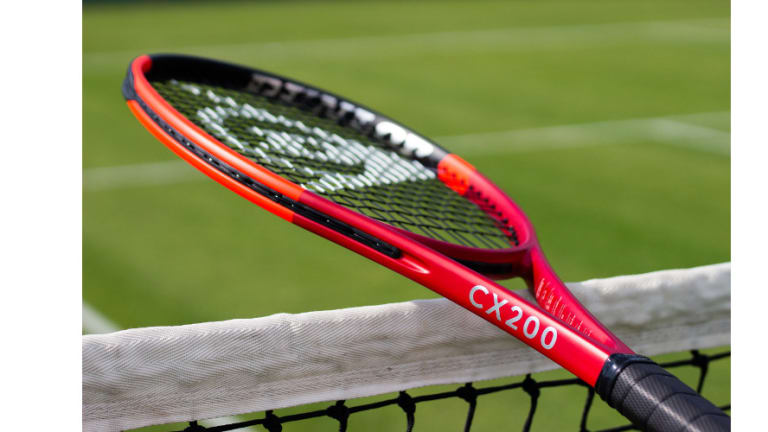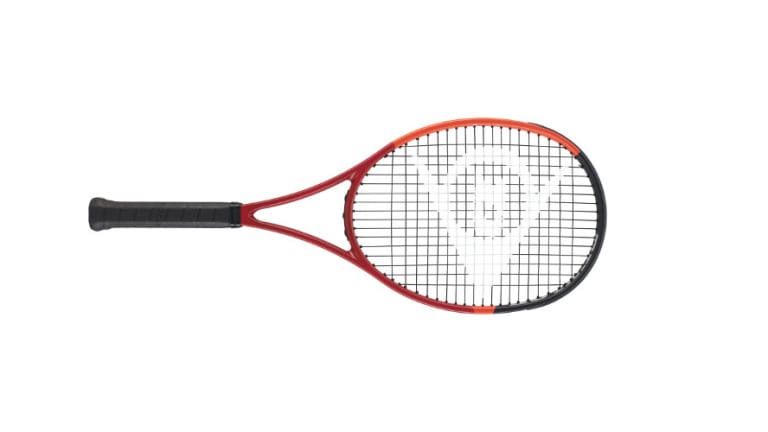- Price: $199
- Head Size: 98 sq. in.
- Length: 27 in.
- Weight: 11.4 oz.
- Balance: 7 pts. HL
- Swingweight: 310
- RA Rating: 65
- Beam Width: 21.5 mm
- String Pattern: 16x19
What’s New
The cross strings on the CX have been widened in the center of the string bed (dubbed Powergrid Stringtech+) to give the frame enhanced spin potential and power. The hoop also now has more of a box shape at the 2 and 10 o’clock positions to better the racquet’s stability and increase frame stiffness through the face and throat. The greater composure at contact is intended to improve shot accuracy. A new vibration dampening material (Vibroshield) has been inserted at 3 and 9 o’clock positions on the face and in the throat area of the frame for a more comfortable feel at contact.
What Works
Smooth handling, reliable control and a plush feel have always been the calling cards of the CX 200. The racquet generally suits players with well-rounded games who don’t want a lot of help from their racquets. Just a dependable frame that does what’s asked without getting in the way. This latest edition isn’t a reinvention of that formula, but after some modifications to the layup it does bring a slightly different playability to the court.
For one thing, frame stiffness is higher than its predecessor. Not significantly so, but enough to notice. It has a clean, connected and (still) comfortable response that’s crisper than the outgoing model. Some might even give it the “modern” feeling label. This is done to give the racquet more punch and stability without hampering its maneuverability.
Even though the greater firmness adds a bit of energy to shots—and the racquet has wider string spacing to boot—most of its power remains user generated. Serves and ground strokes don’t have the natural oomph or depth of many competing models, making swing speed the primary source. Which, fortunately, is one of the frame’s biggest strengths. In fact, has been enhanced thanks to the racquet’s sub-320 swingweight (one of our test frames actually measured at around 300) and a thinner face.
If you’ve got a live arm, the frame can really whip through contact to pick up extra pace and spin. With directional help being foremost, you can go after shots without much fear of overhitting. So on serves and big forehands you can take aim at a smaller target and let it rip, relying on your technique and aggression to do the bulk of the work.
And while control is an asset, as is the frame’s level of touch, this version of the CX responds best when taking a healthy crack at the ball. The additional string spacing offers an appreciable spin window, which opens even wider when swings are angry. Blocking or chipping returns and finessing the ball isn’t as effective as perhaps with a beefier frame. Instead, using racquet head speed to loop deep groundies, roll angles or knife a slice is where it thrives.
The nimble handling is also a bonus at net. The racquet effortlessly gets into position, and the responsiveness and good command lead to assured volleying. It’s capable of punching floaters through the court, but is even better at taking advantage of openings short in the court. Net rushers and doubles players won’t have any questions went it comes to the racquet’s versatility.
Finally, if you’re a competitive player who requires multiple frames for matches, the racquet’s price tag of just below $200 is a welcome and unusual sight in today’s market.

